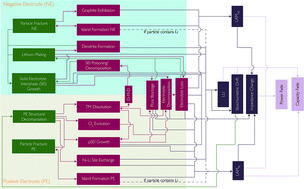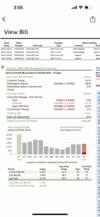I am going to flag this as not a particularly helpful response.
If someone suggests that a link isn't particularly helpful, then please at least have the kindness to address the issue(s), or don't post in the first place. I did read the article, which is OK in my book, but not particularly outstanding, and not directly relevant to Powerwall behavior. If you are one of the authors, my apologies.
What about that particular review article struck you as relevant to the charge / discharge / standby behavior of Powerwalls? Batteries do have differences, even if they are nominally "lithium ion", as do battery management systems, as does charge/discharge/storage temperatures, as well as charge/discharge profiles and rates. Subtle differences in electrolyte, barrier films, anode / cathode treatments, the trace metals composition, construction and construction processes, and in the details of the nanostructures of all of the above, can, and do, have profound effects on battery performance characteristics. (Some of which were touched on in the paper) Again, how do these stack up in aggregate for a Powerwall system to impact the longevity under various charge / discharge settings?
I happen to understand many of the above, and I can say that I haven't a clue about what the bottom line is for a Powerwall. I do find the data from owners who are logging their system status over time interesting, although I guess I do wonder how accurate any particular reported value for pack capacity is at any given point in time. BMS undergo periodic recalibration of their own estimates, so I would be inclined to take any given value with a grain of salt, but the trends are, I suspect, informative and reliable. (I'm not dumping on Tesla here. It is not trivial to accurately measure power flow in/out, due in part to inaccuracies in measurements (ADCs, bit level accuracy, and the vagaries of silicon and all that) and a certain amount of rescaling to cell voltage(s) is inevitable, but each cell has slightly differing voltage/state of charge relations due to the aforementioned effects and others.)
******
Personally, I am happy to have the Powerwall as a backup. Like many things in life at a certain level of examination, I tend to treat it as a black box. There is no way to know many of the inner working details, and for things under software or firmware control, those details could change in the next update. Which leaves me on the page of using them for backup, and a certain amount of charge/discharge to slip past most of our peak usage, though thanks to
@Redhill_qik's detailed analyses, I realize that also isn't worth sweating. My plan is if a Powerwall drops below warranty levels at nine and a bit years, I will address it then. Lots of water yet to go under the bridge...
All the best,
BG




